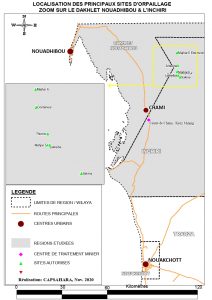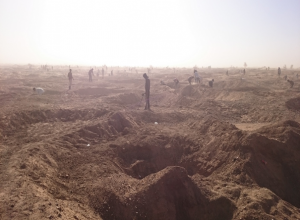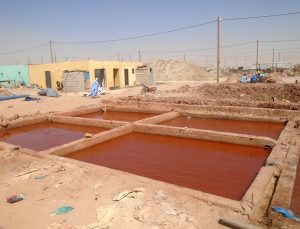Artisanal gold mining started to boom in Mauritania in 2016 following rumors of the discovery of two kilograms of gold in Tijrit (in the Inchiri region), 160 kilometers northwest of Nouakchott. In 2019, the estimated number of artisanal miners approached twenty-two thousand people.
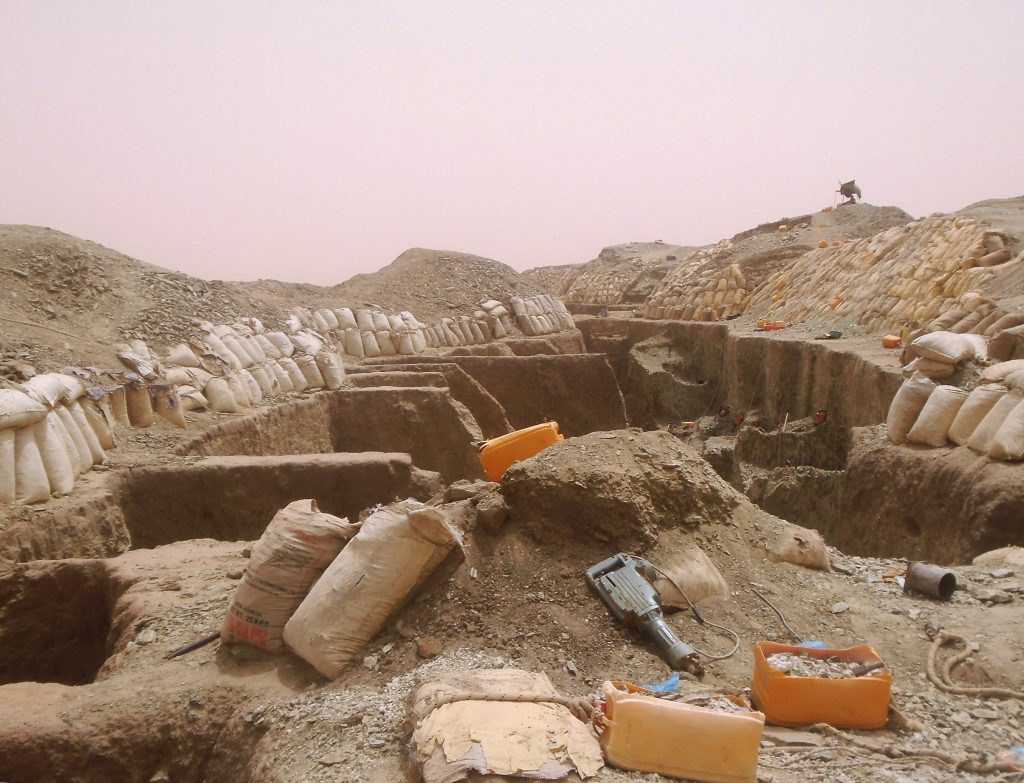
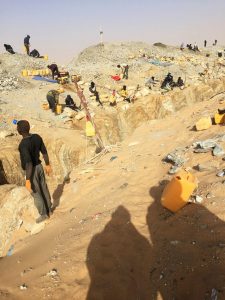
The search for gold quickly moved from surface exploration to the subsoil

In the town of Zouerate, piles of extracted
rock became an element of the town’s landscape
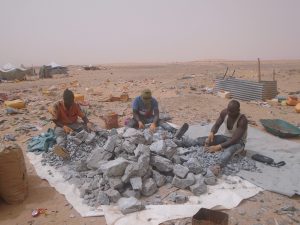
Raw materials brought from the Saharan
hinterland for processing
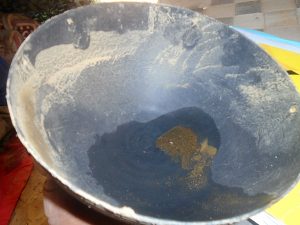
Gold is found! (often in very small quantities)
© Moustapha Taleb Heidi for CAPSAHARA, 2020

